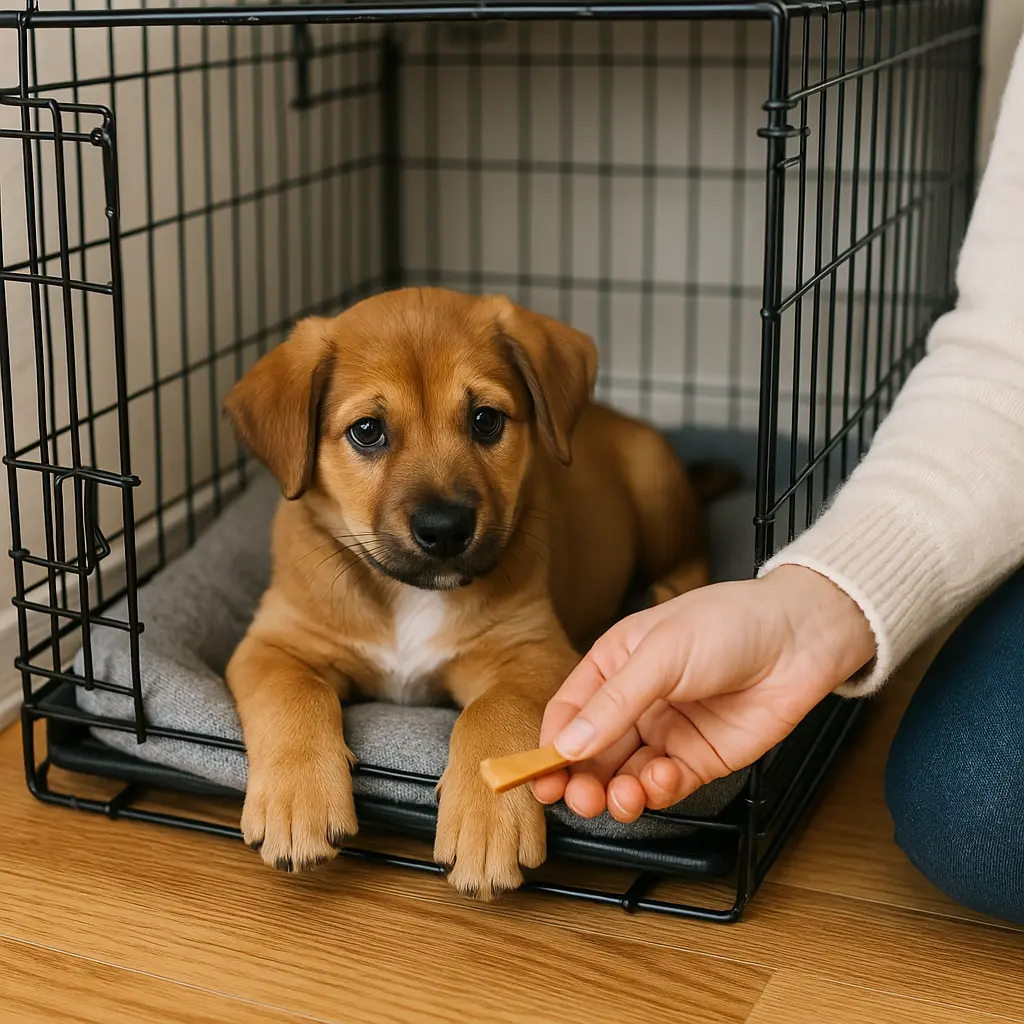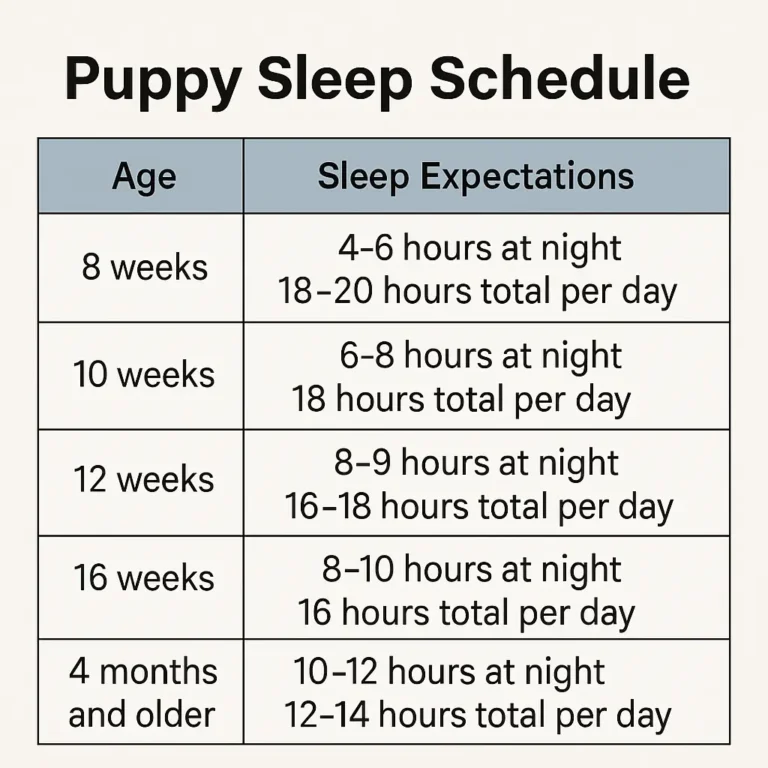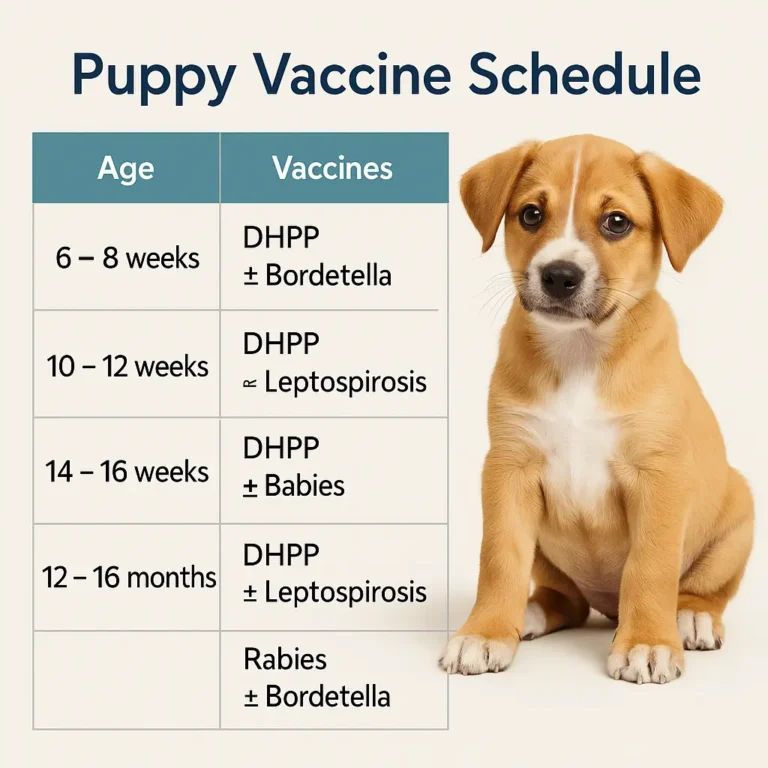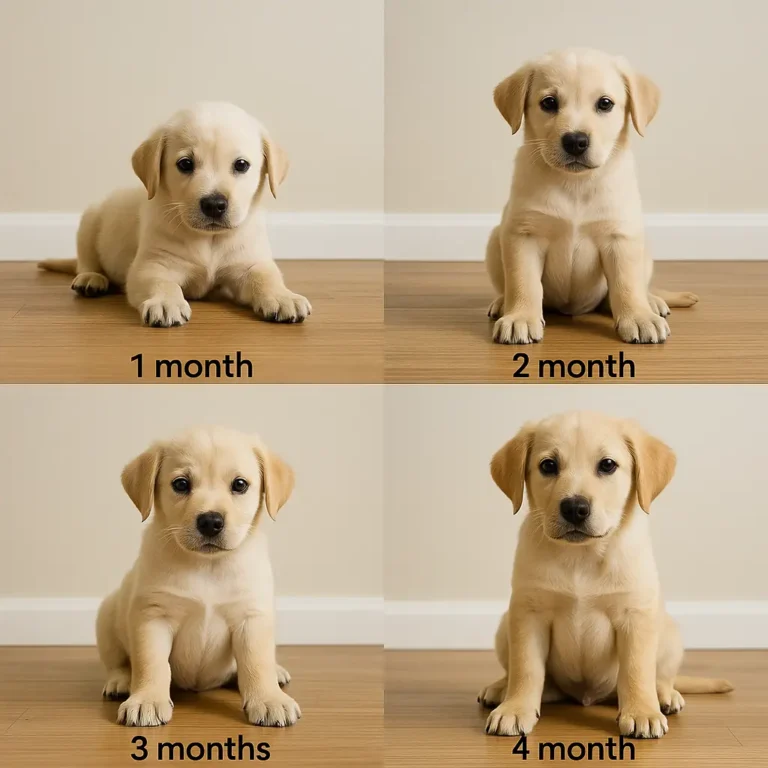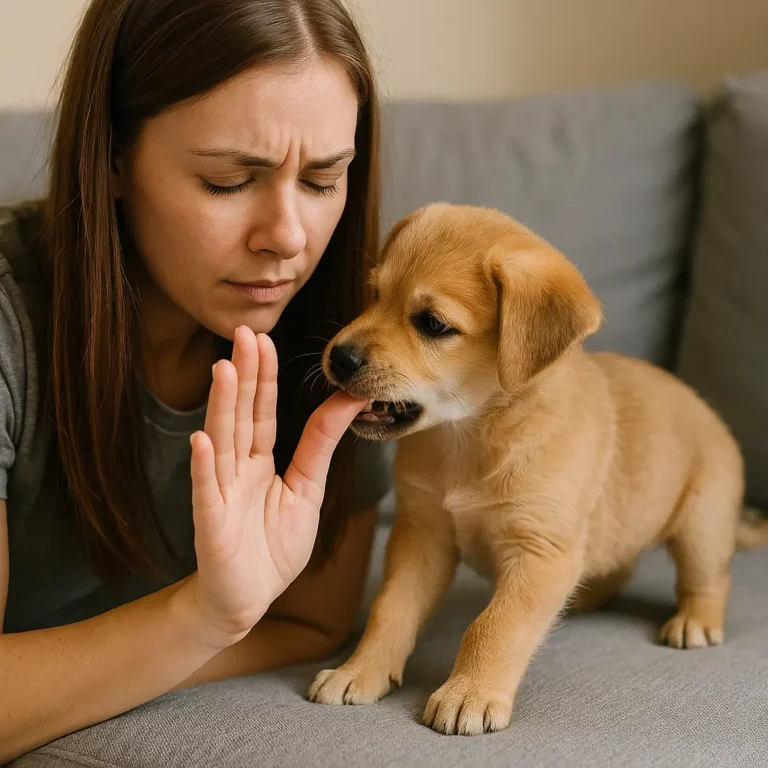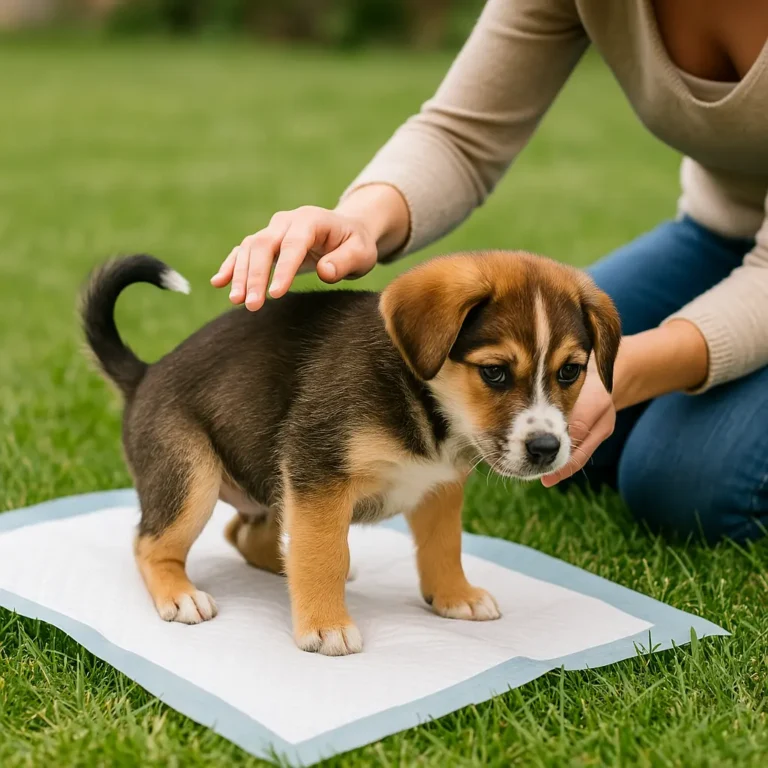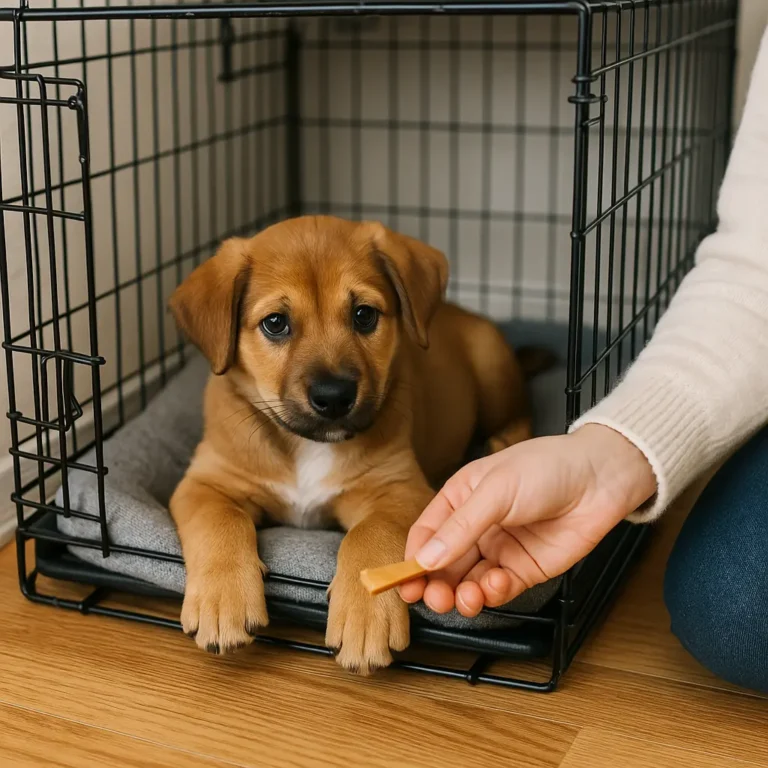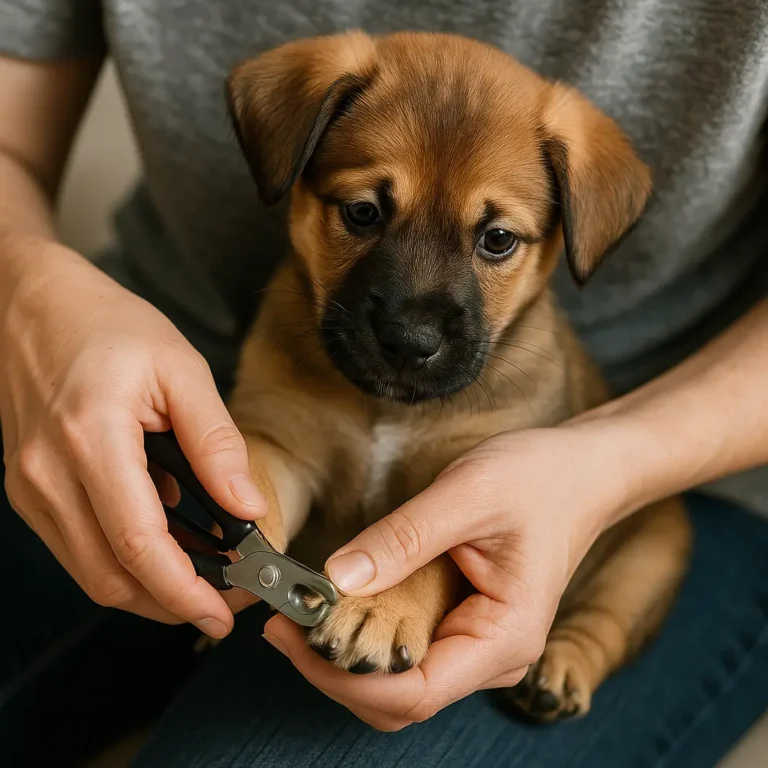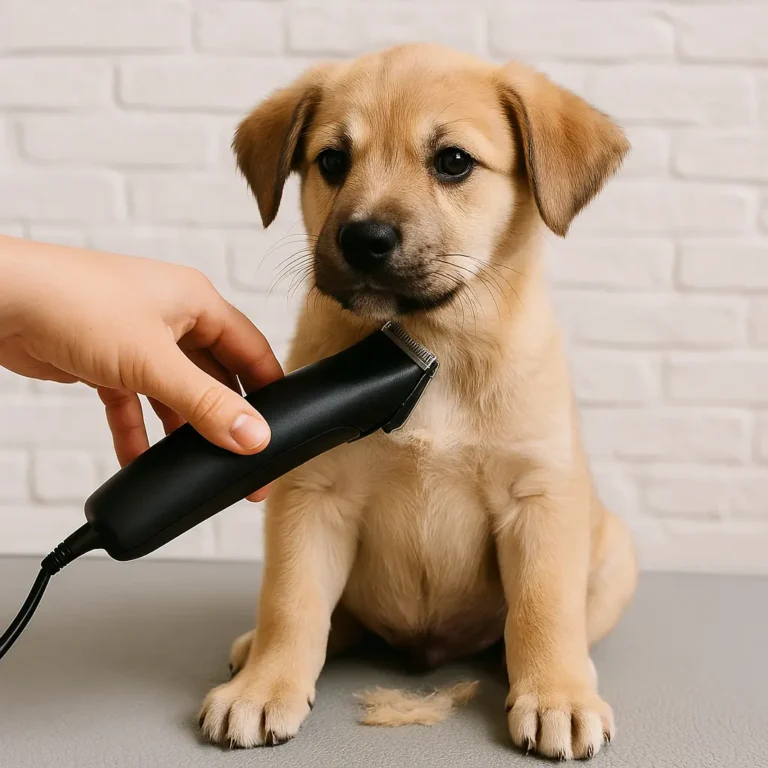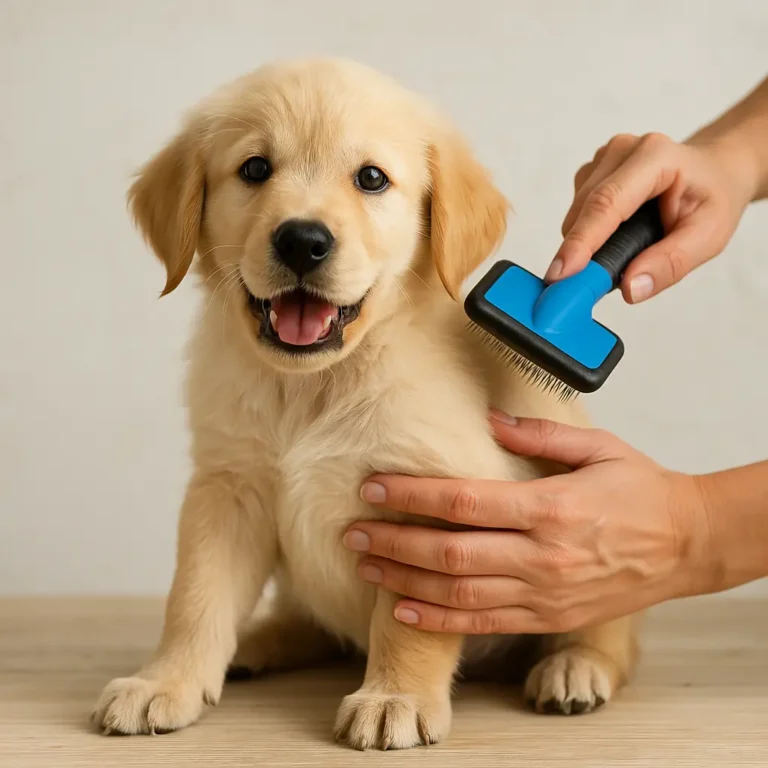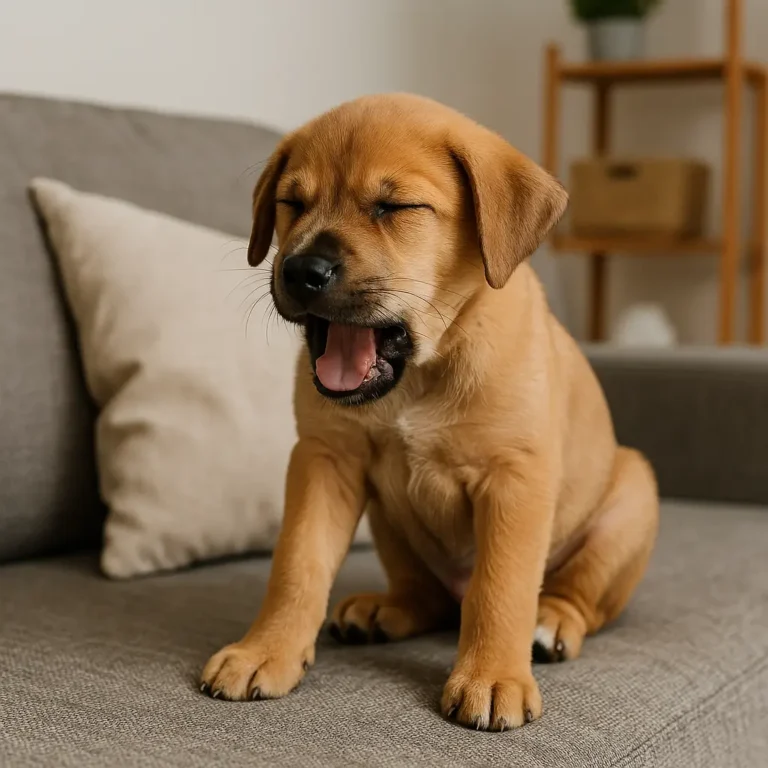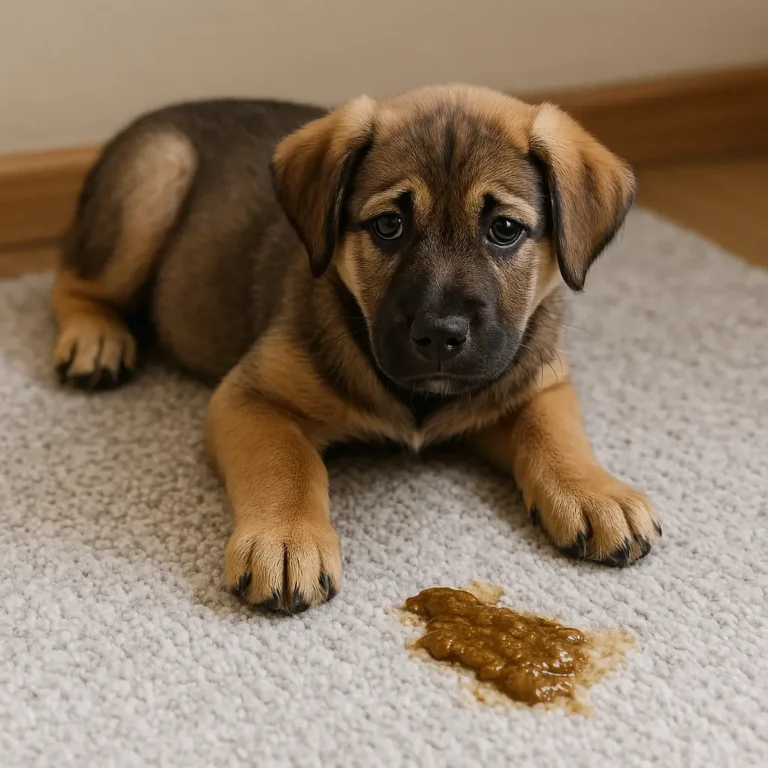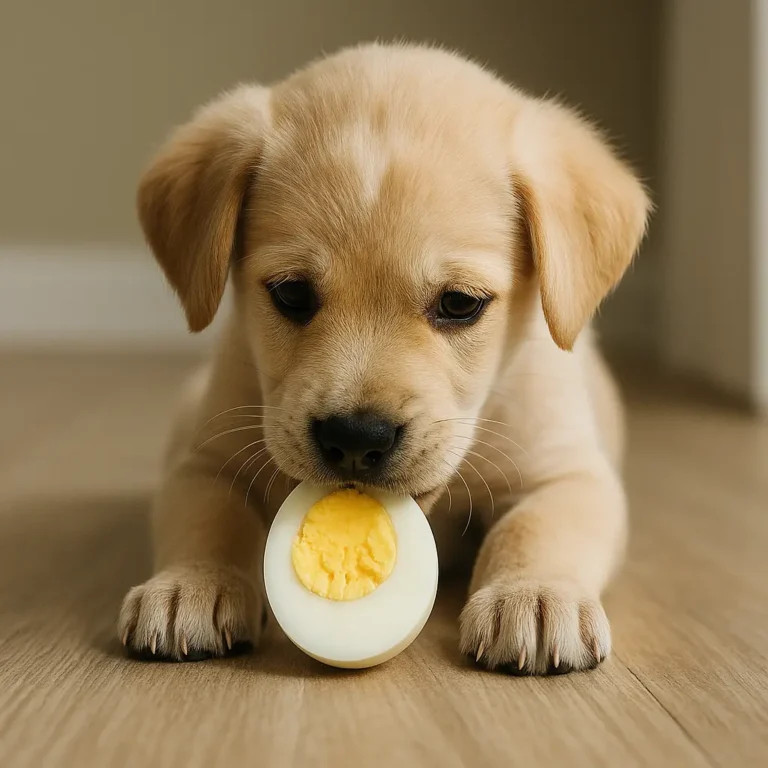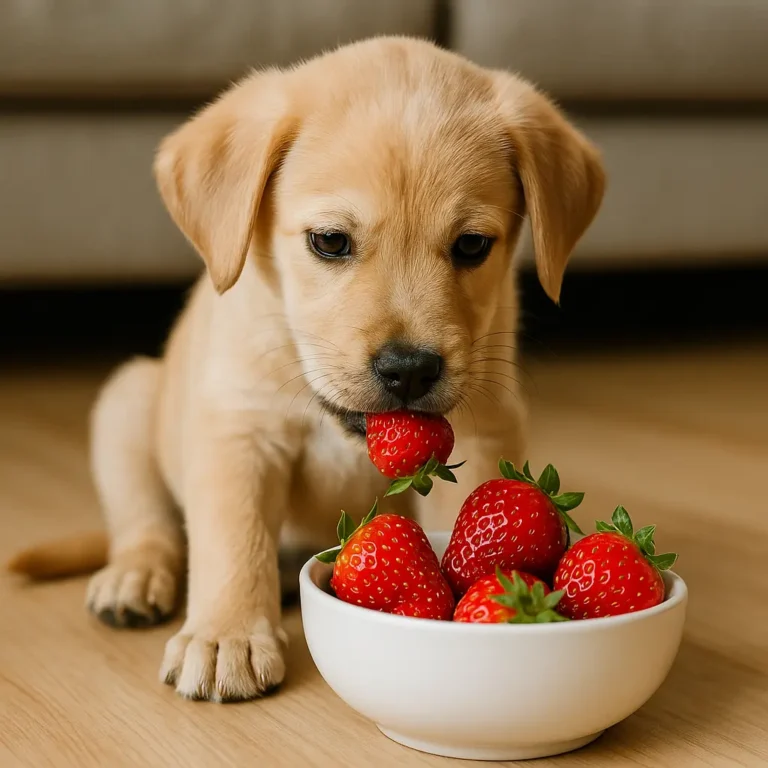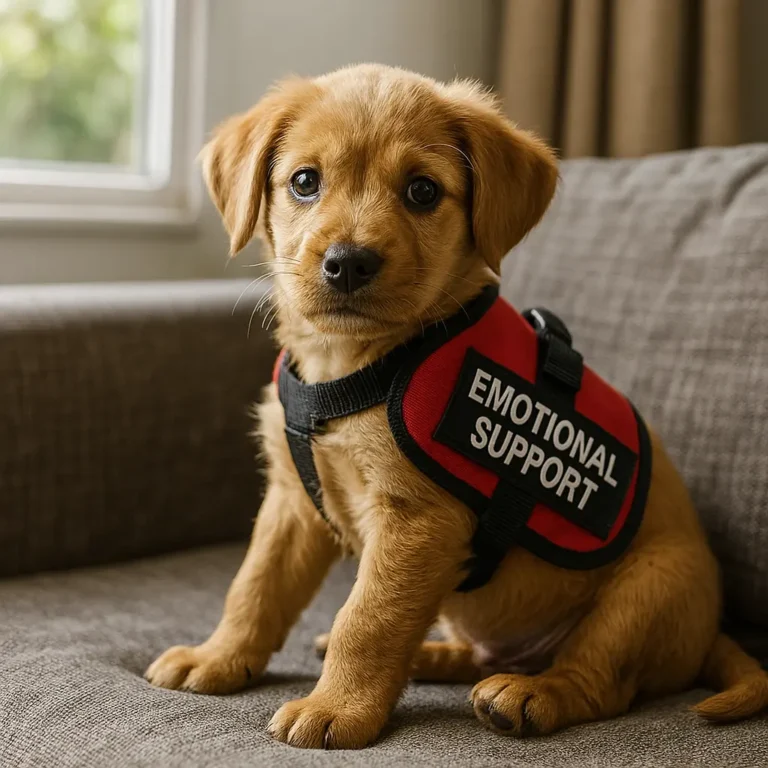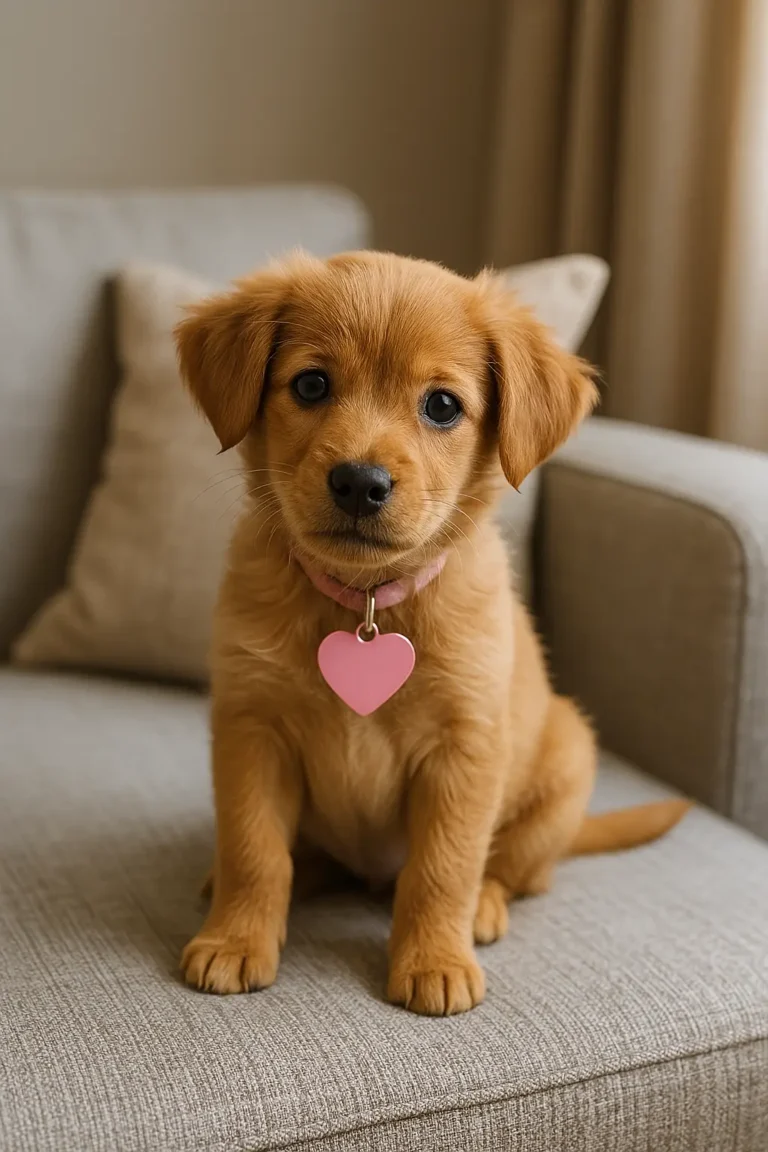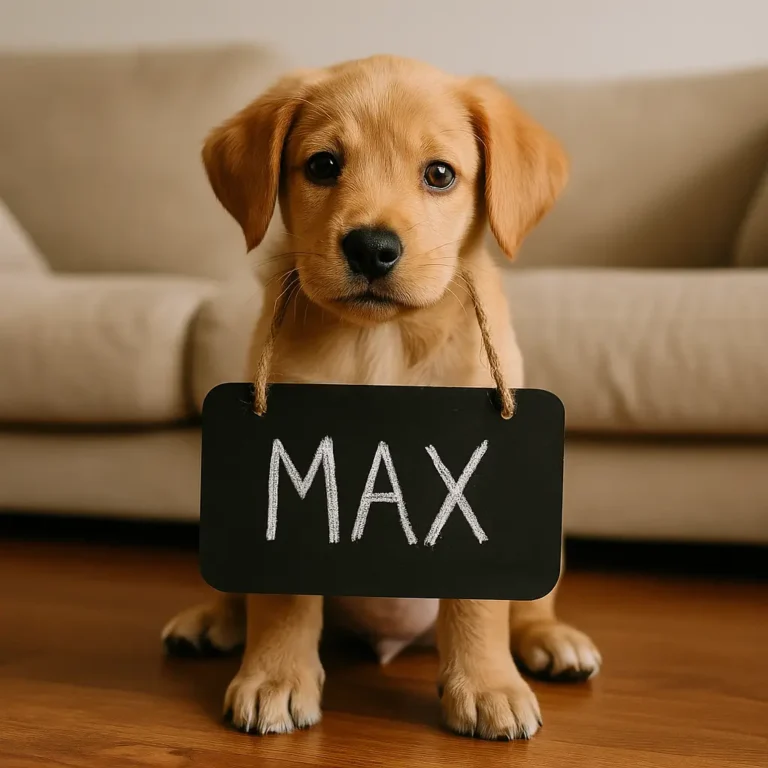Crate training can feel intimidating, but it’s one of the best decisions you’ll make as a dog parent. Wondering how to crate train a puppy without the stress or guilt? You’re in the right place. This guide breaks down the best way to crate train a puppy—step by step. From nighttime tips to crate games and breed-specific advice, we’ll cover it all. Whether you’re starting fresh or fixing a few mistakes, puppy crate training builds trust, teaches boundaries, and keeps your dog safe. Let’s unlock the secrets to calm, confident crate time—without the whining or accidents.
🌙 How to Crate Train a Puppy at Night Without Sleepless Struggles
Crate training a puppy at night is key to building a solid routine—but it doesn’t have to mean sleepless nights.
Here’s how to make bedtime a breeze:
-
Wind down before bedtime
Tire your puppy out with play, a short walk, and a potty break. -
Keep the crate near you
Place it beside your bed so your pup feels secure—not isolated. -
Use familiar scents
Add a blanket or a toy with mom’s scent. A ticking clock or heartbeat toy can mimic littermate comfort. -
Night potty trips
Set an alarm every 2–3 hours initially. Puppies under 12 weeks can’t hold it all night. -
Stay calm during wake-ups
Take them out quietly—no playing, just potty and back to the crate. -
Ignore mild whining
If you’ve confirmed they’re not hungry, scared, or need to potty, don’t reinforce noise with attention.
Over time, your puppy will learn that nighttime means sleep—not play. Within a few weeks, most pups adjust beautifully.
The secret to crate training a puppy at night? Predictability, comfort, and patience. It’s a game-changer for house training and peaceful nights ahead.
📋 Step-by-Step Crate Training Plan Every Dog Owner Needs
Learning how to crate train puppy behavior starts with a plan. Follow this simple progression for success:
Step 1: Choose the right crate
Pick a size just big enough for your pup to stand, turn, and lie down—but not large enough to potty inside.
Step 2: Introduce the crate positively
Leave the door open and toss in treats or toys. Let your puppy explore on their own terms.
Step 3: Feed meals in the crate
Start associating the crate with positive experiences like breakfast and dinner.
Step 4: Shut the door gradually
Once they’re comfortable, start closing the door while they eat, then open when they’re finished.
Step 5: Practice short sessions
Crate your puppy for 5–10 minutes while you’re home. Gradually increase the time.
Step 6: Use a cue word
Say “crate” every time they go in. Repetition builds association.
Step 7: Keep it calm
Never use the crate as punishment. Always make it a safe, happy place.
With consistency and praise, crate training puppies becomes a stress-free process. The goal? A calm, confident dog who feels at home in their own space.
🐾 Dog Breeds That Benefit Most from Crate Training
All dogs can benefit from crate training—but some breeds thrive with structure more than others.
Top breeds for crate training success:
Labrador Retrievers – Eager to please, love routine
Boxers – Energetic dogs that need downtime
Border Collies – Crates help calm active minds
French Bulldogs – Thrive with clear boundaries
German Shepherds – Highly trainable, love security
Even independent or stubborn breeds benefit—just be patient. Whether you’re raising a working dog or a lap pup, crate training a dog builds a healthy foundation for life indoors.
✅ The Big Benefits of Crate Training You’ll Be Glad You Knew
Still on the fence about crate training a puppy? Here’s why it’s one of the best training tools out there:
1. Speeds up potty training
Dogs don’t like to soil their sleeping area. Crate training reinforces bladder control.
2. Teaches independence
The crate gives your puppy a safe space to rest and recharge, reducing separation anxiety.
3. Prevents destructive behavior
Puppies love to chew—but not while snoozing in a secure crate.
4. Builds routine and structure
Crates help establish predictable schedules, which makes training smoother across the board.
5. Aids travel and vet visits
A crate-trained dog feels safer in crates during car rides, flights, or emergencies.
6. Protects your pup
Crating prevents access to wires, garbage, and other hazards when you can’t supervise.
Crate training is not confinement—it’s comfort. Done right, the crate becomes a cozy retreat your pup will enjoy.
If you’re asking, “What’s the best way to crate train a puppy?” The answer starts with positive associations and consistency.
Crate training sets the stage for polite behavior, safety, and peace of mind—for both of you.
Grooming Tips
🎯 Why Crate Training a Puppy Matters More Than You Think
Why is crate training a puppy important? Because it teaches life skills your dog will carry into adulthood.
A crate is more than a potty training tool—it’s your dog’s personal den. It promotes calm behavior, reduces anxiety, and helps your puppy learn boundaries.
In multi-dog households, crates provide individual space. In busy homes, they offer a quiet retreat.
For vet visits, grooming, or travel, crate-trained dogs stay safer and stress less. They’re easier to board, fly with, or handle in emergencies.
Crate training also minimizes destructive habits. Instead of chewing furniture or eating socks, your pup rests in their safe space while you’re out.
And let’s not forget the long game: a crate-trained dog sleeps through the night, handles change better, and adapts faster.
But here’s the key: crate training puppies should always be done with care. Never use the crate for punishment. Think of it as a training partner—not a timeout corner.
When introduced the right way, crates aren’t cages—they’re comfort zones.
So if you're wondering how to crate train a puppy with lasting results, it starts by showing your pup their crate is a happy place, not a holding cell.
Health Tips
🧸 Play Crate Games With Your Dog to Make Training Fun
Want to make crate training more exciting? Turn it into a game!
Crate games teach your pup that their crate is fun—not just a holding place. Here are a few to try:
1. Treat toss
Toss a treat inside the crate and say “crate.” Praise when your pup walks in to retrieve it. Repeat often.
2. Door open challenge
Have your dog stay inside the crate with the door open. Reward them for calm behavior instead of rushing out.
3. Mealtime madness
Feed meals inside the crate. Start with the bowl near the entrance, then move it further in each day.
4. Crate & release
Cue “crate,” reward entry, then release with “okay!” Keeps training fun and builds impulse control.
5. Hide & seek
Hide treats in the crate when your puppy isn’t looking. Let them discover surprises inside.
Games are the best way to crate train a puppy because they boost trust and reduce fear.
Just like kids learn through play, puppies build confidence by having fun. Crate games help your pup associate the crate with joy—not confinement.
So grab those treats, get playful, and make your crate a favorite hangout spot.
FAQ
How long does crate training a puppy take?
Should I cover my puppy’s crate at night?
Can I leave a puppy in the crate all day?
What should I put in the crate?
Can crate training help with separation anxiety?
Should I let my puppy cry in the crate?
How do I know the crate size is right?
Is crate training cruel?
Life Tips
Crate Training Puppies the Stress-Free Way
Learning how to crate train a puppy isn’t just about potty habits—it’s about creating calm, confidence, and structure from day one. Whether you’re training at night, during the day, or using games to build trust, the crate can be your secret weapon to raising a well-adjusted dog. From reduced anxiety to safer travel, the benefits of crate training a puppy are endless. Remember to go slow, stay consistent, and keep it positive. Your pup isn’t being confined—they’re learning independence. With patience and love, the crate becomes their happy place—and your life becomes a lot easier.

